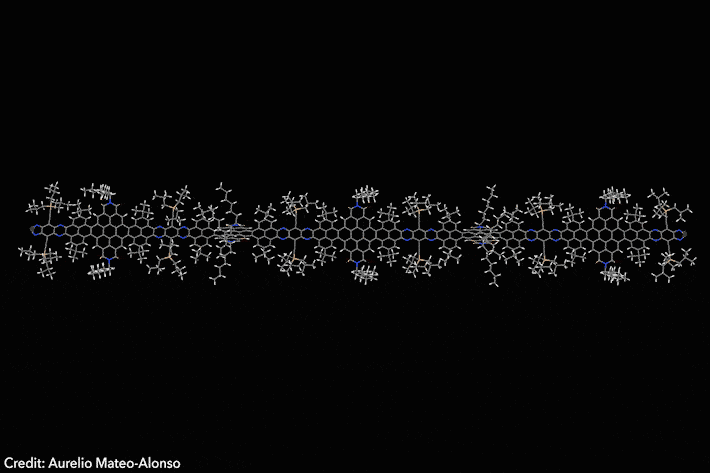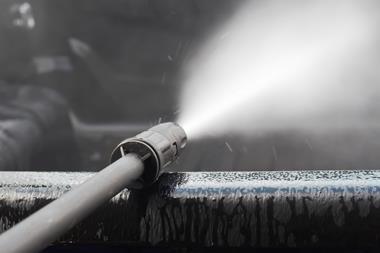Iterative synthesis makes nanoribbons that are more than 7nm long

Chemists have used an iterative process to synthesise the longest graphene nanoribbon to date, consisting of 30 linearly fused aromatic rings with a length of 7.7nm.
Graphene nanoribbons are almost one-dimensional structures with promising applications in electronics and photonics. But current synthesis methods fail to control structural variables – such as width, length and doping – that are key to their properties. Organic synthesis in solution provides the best atomic precision, but only yields small nanoribbons due to the large number of steps and complicated purifications.
Now, a team led by Aurelio Mateo-Alonso of POLYMAT in Spain, has developed a novel Lego-like methodology for the preparation of monodisperse nitrogen-doped nanoribbons. Using two distinct molecular building blocks and a series of iterative deprotection and condensation reactions, researchers managed to precisely synthesise a series of nanoribbons formed by 10, 20, and 30 linearly fused aromatic rings, with respective lengths of 2.9nm, 5.3nm and 7.7nm.
All three are soluble in chlorinated solvents, and could therefore be purified using flash chromatography and characterised by NMR at room temperature. Computational analysis predicted the nanoribbons’ bandgaps should be similar to some inorganic semiconductors like black phosphorus or gallium selenide.
References
D Cortizo-Lacalle et al, Angew. Chem. Int. Ed., 2017, DOI: 10.1002/anie.201710467

















No comments yet